
- Home
- Altars
- Architecture
- Attire
- Bamboo
- Cities and Roads
- Elevation
- Fruits
- Lotus
- Markets
- Music
- Natural Resources
- Rice
- Rivers & Waterways
- Where is Vietnam?
Fruits
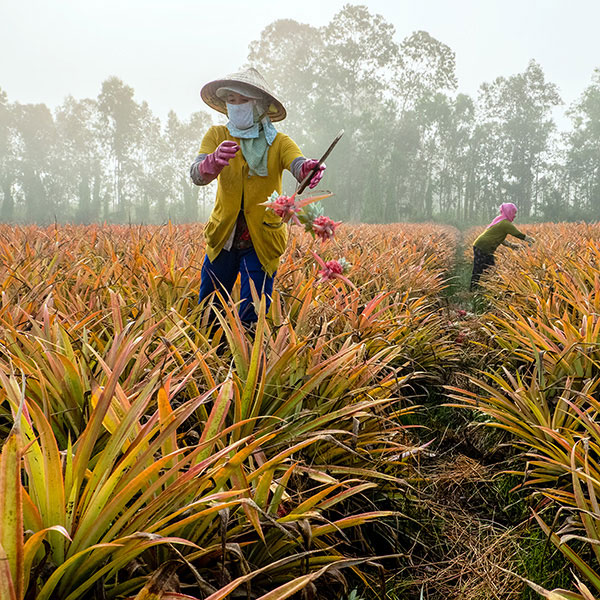
There is an incredible amount of good looking and tasting fruit found in Vietnam. The availability of different fruits is influenced by climate and landscape. The northern part of the country is closer to the mountains and experiences colder weather. The southern Vietnam climate is tropical, and includes very warm weather and monsoons.
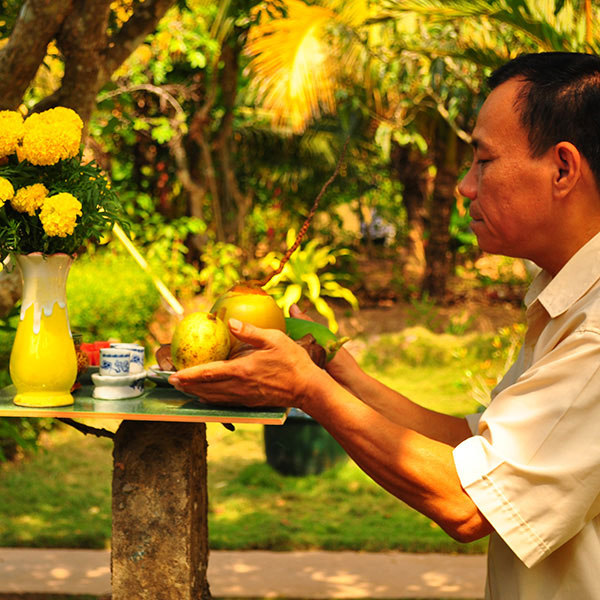
The display of five fruits on the ancestral altar is an important part of the Vietnamese New Year celebration, Tet. The five fruits vary from North to South based on climate, availability and regional language differences, but having them on the altar at Tet is important country-wide.
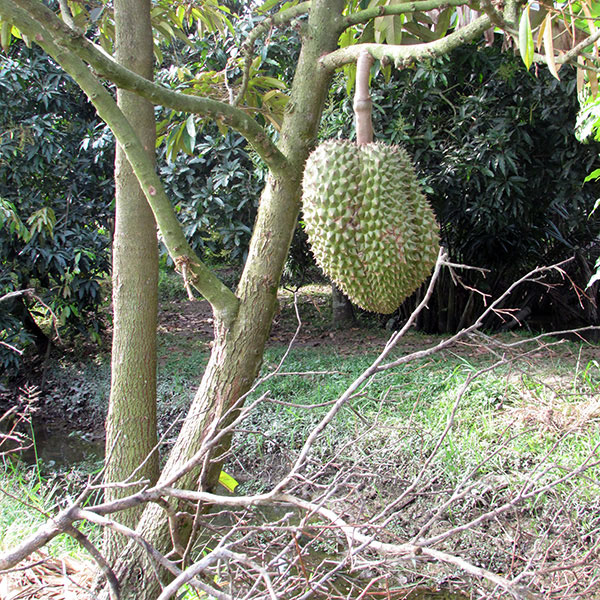
Durian
Region: South
A durian fruit is five to six times larger than a mango. Its skin is thick, rough, and covered with sharp thorns. Inside are layers of sweet bright yellow segments of meat that make the pulp look like it is covered with a thin layer of butter. Durian has a very strong smell.
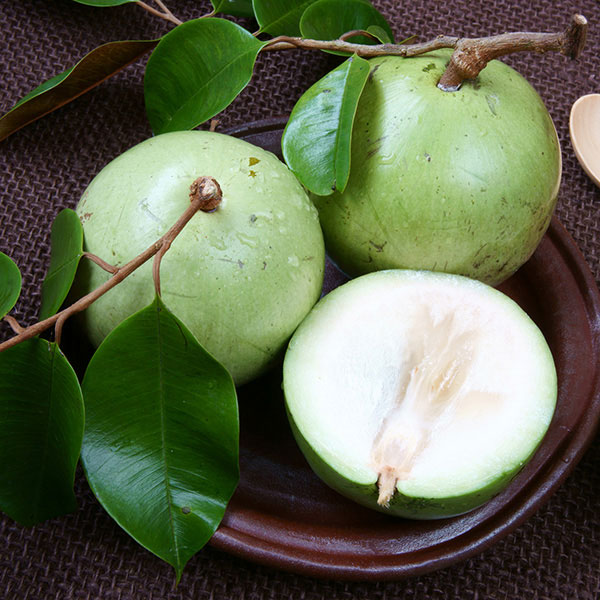
Milk Fruit or Star Apple
Regions: Central, South
This round smooth fruit's juice is fragrantly sweet and milky white. The fruit must be softened with the hand before being eaten.
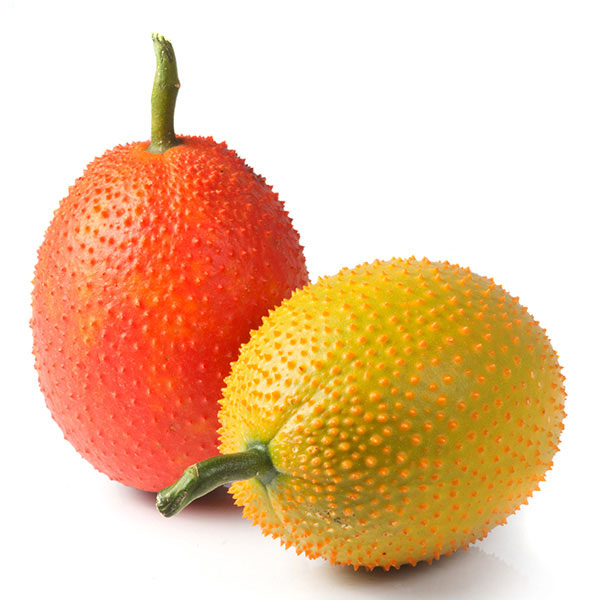
Gac
Region: North
Gac has a short harvest season, and is served at special occasions in Vietnam such as Tet and weddings. It is often used for the dish xoi gac, where it is cooked in glutinous rice for color and flavor.
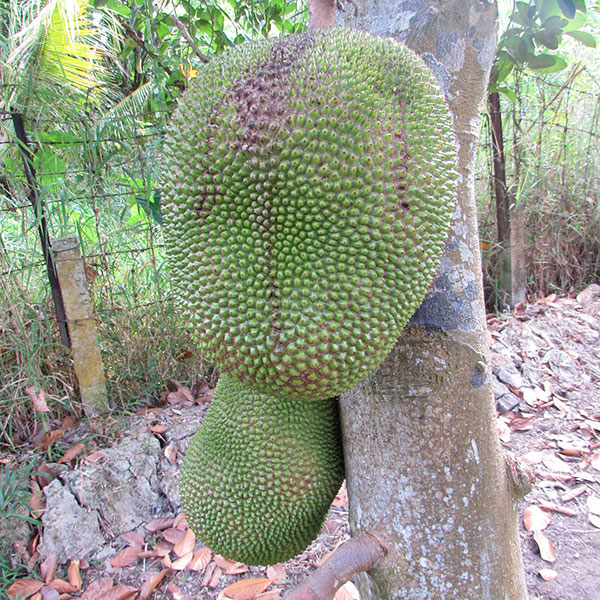
Jackfruit
Regions: North, Central, South
Jackfruit grow on every part of the tree: the trunk, branches, and even on the roots. When ripe, their pulp is yellow and sweet. There are two types of jackfruit: those with hard and crunchy flesh or those with soft flesh and a lot of juice.
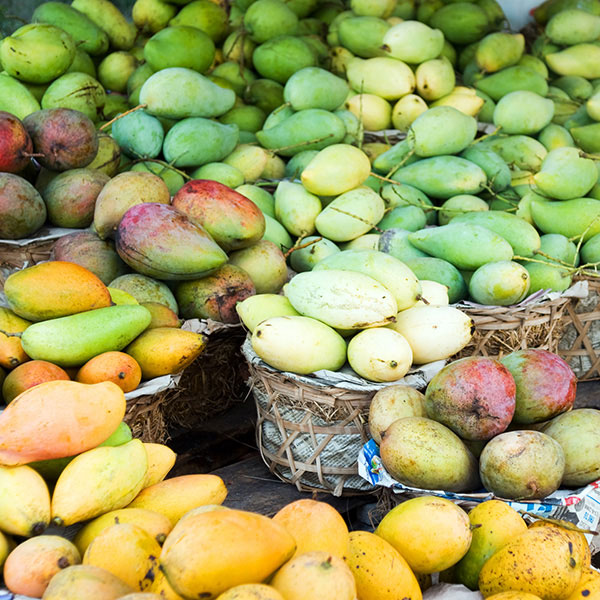
Mango
Regions: North, Central, South
There are several kinds of mangoes in Vietnam: yellow ones with sweet and soft meat and green sour ones.
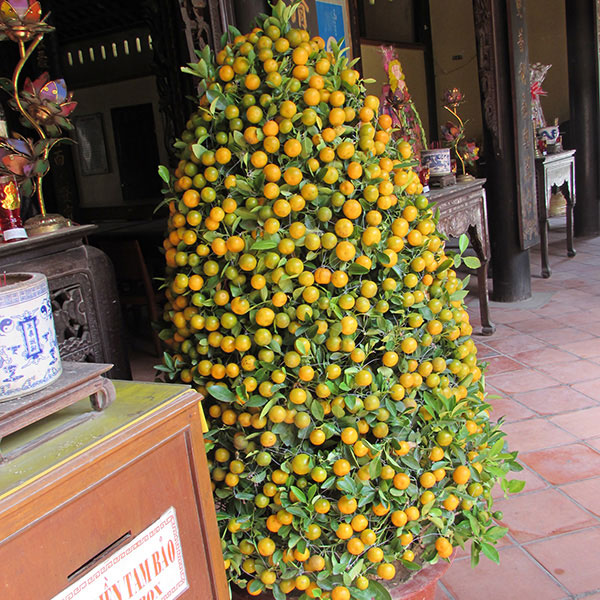
Kumquat
Regions: Central, South
In Vietnam, kumquat bonsai trees are used as a decoration for the Tet (New Year) holiday. Kumquats are frequently eaten raw as the rind is sweet and the juicy center is sour.
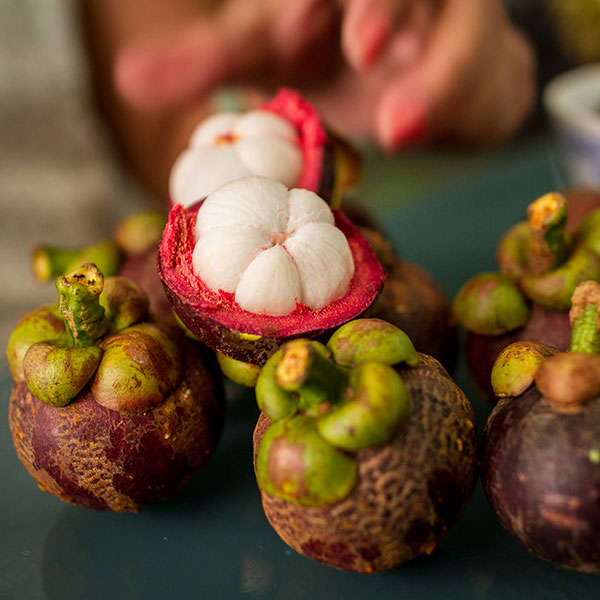
Mangosteen
Region: South
Mangosteen has a dark violet skin with transparent white pulp inside. This delicious fruit has equal segments, with a seed inside of each.
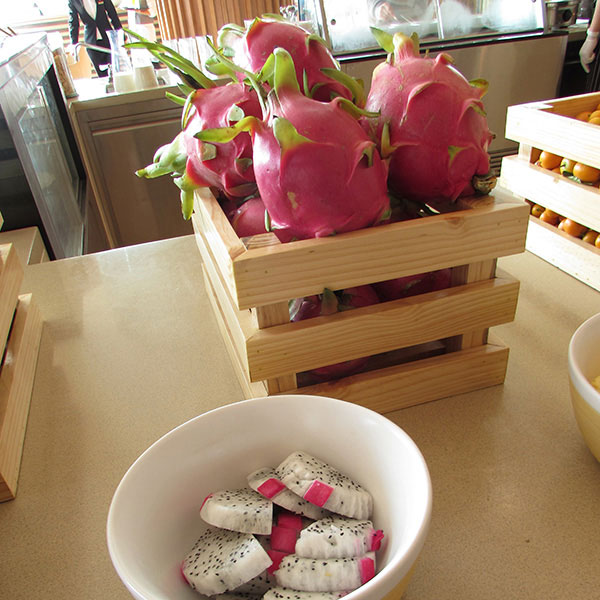
Pitaya or Dragon Fruit
Region: Central
When ripe, this sweet and sour fruit peels as easily as a banana. Its pulp is white and gelatinous and contains many small black seeds.
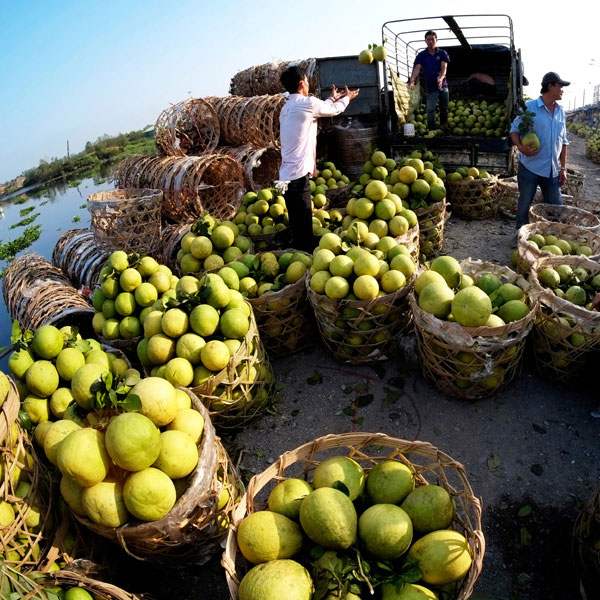
Pomelo
Region: South
This fruit tastes like a sweet, mild grapefruit but is much larger in size. Vendors create large displays of pomelos in honor of Tet.
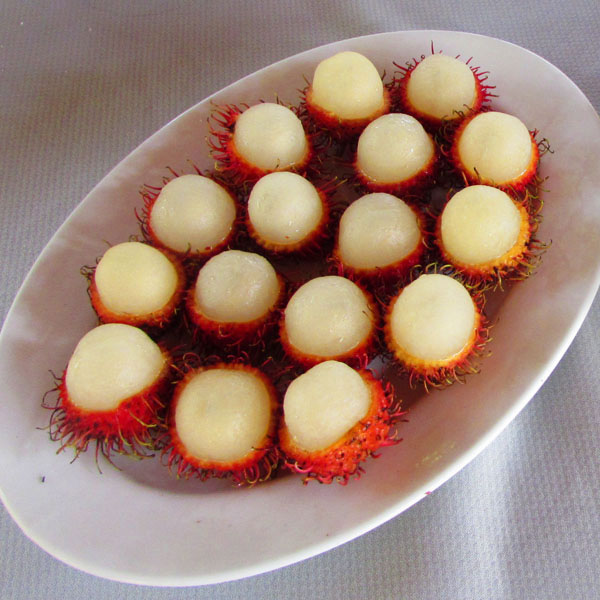
Rambutan
Region: South
A rambutan tree has broad foliage and many branches. Its skin is tough, thick and hairy. The fruit inside is transparent white, tender, and sweet.
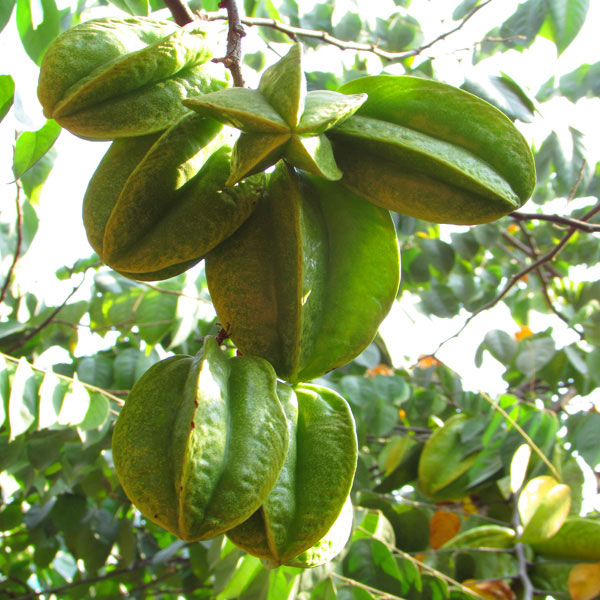
Star Fruit
Region: South
The Star Fruit, also called Carambola, is a firm and juicy fruit that tastes like a cross between a grape, an apple, and an orange. Its skin is waxy in texture, and when sliced in cross section, the pieces look like stars.
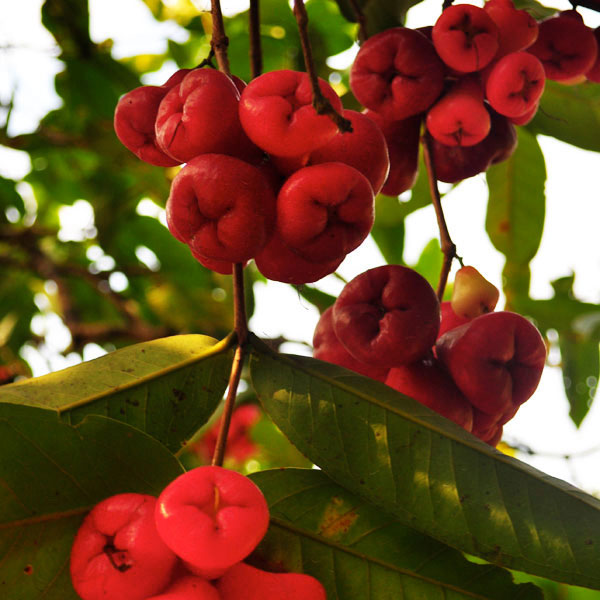
Rose or Water Apple
Regions: South
Rose apples have a naturally waxy skin that can reach a deep, red color with a crisp, juicy inside. They are mildly sweet and have a small core.
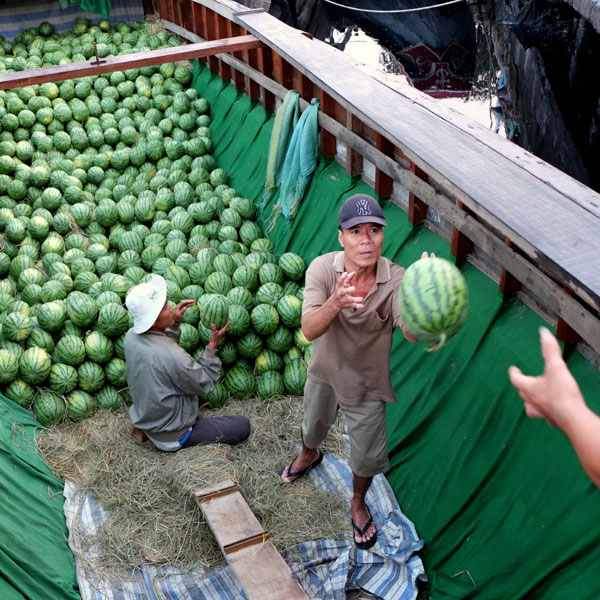
Watermelon
Regions: North, Central, South
Watermelons are popular delicacies during Tet. Watermelons are chosen especially because their red color symbolizes luck. In addition, watermelon seeds are consumed during the new year as a snack.
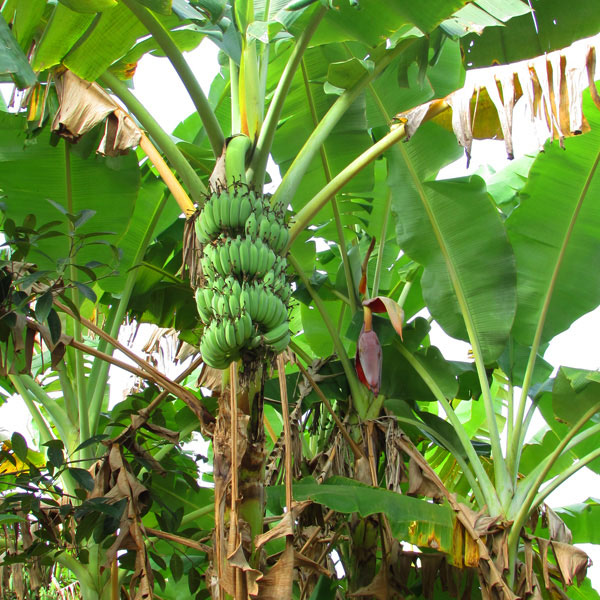
Banana
Regions: North, Central, South
Bananas are eaten as a fruit when ripe, but green bananas are also incorporated into various food dishes. Banana flower is mixed in salads. Banana tree trunks, when young, can be eaten as a vegetable, and banana tree roots can be cooked with fish, or mixed in salads. Leaves are used to wrap rice cakes. Almost every backyard in Vietnam has a banana tree, especially in the South.
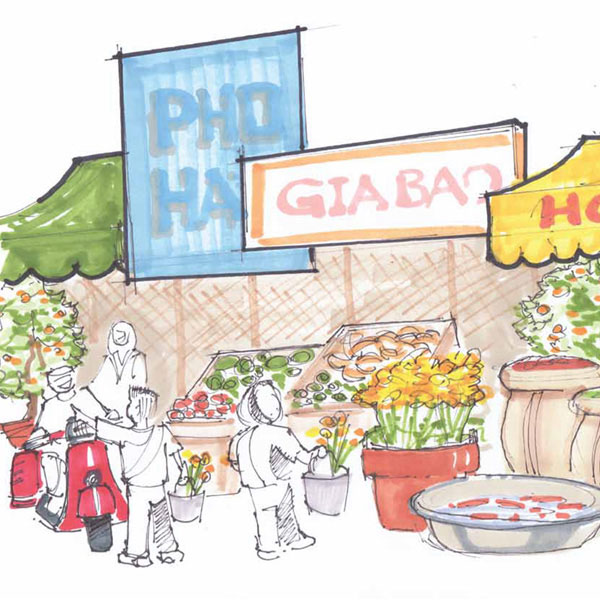
The Voyage to Vietnam exhibition features an open air marketplace where you can 'buy' many of the fruits described here. Also look for the Altar in the home where the 'Five Fruits' are displayed in honor of Tet.